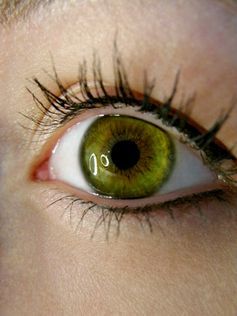
Body Doubles and Aliens? Capgras Delusions Explained

This article was originally published at The Conversation. The publication contributed the article to Live Science's Expert Voices: Op-Ed & Insights.
In the film Invasion of the Body Snatchers aliens invade earth by replicating individuals. While the idea that we could be duped by shape-shifting aliens is a great idea for a film, the story echoes a bizarre appeal playing out around Senate elections in the United States.
Senate candidate Timothy Ray Murray has reported that he believes that his political opponent, Senator Frank Lucas, is dead and being impersonated by a body double.
Actually, in what initially seems more like a pitch for an episode of the TV series Get Smart than an alien invasion, Candidate Murray claimed that Senator Lucas died in 2007. He was then replaced by a body double.
Subsequently – Murray claims – that body double was hanged in the Ukraine in 2011 before being replaced by a body double double.
While it is tempting to think that Candidate Murray may be on to something – the idea that governments are populated by emotionless aliens carries considerable intuitive appeal – it is more likely that Candidate Murray may be suffering a Capgras delusion.
Capgras delusions
Described first in 1923 by French psychiatrist Joseph Capgras and his colleague Jean Reboul-Lachaux, Capgras delusions are characterised by the belief that someone known to us – a friend, spouse, child, parent or whomever – has been replaced by a physically identical impostor.
Sign up for the Live Science daily newsletter now
Get the world’s most fascinating discoveries delivered straight to your inbox.

If that sounds familiar, or if a dearly loved elder has accused you of not being whom you claim to be, it is because these types of delusions are not uncommon.
Indeed, Capgras delusions are part of a larger group of misperceptions known as delusional misidentification syndrome.
More common in females than males by a ratio of three to two, Capgras delusions can occur in patients with paranoid schizophrenia or with neurodegenerative diseases, including dementia.
They can arise also as a result of traumatic brain injury, diabetes, or hypothyroidism. Capgras delusions have been reported even in association with migraine headaches.
Treatments can be successful, depending on the cause. Anti-psychotics can alleviate Capgras delusions, as can some drugs that treat comorbidities.
What is clear is that Capgras delusions arise as the result of some type of neural dysfunctioning.
Divide, conquer and perceive
Clues to how Capgras delusions arise come from understanding how brains generate perceptions of the world.

When confronted with high-value but complicated cues, brains have evolved a simple solution: divide up information and process different types of information separately.
For example, our visual system processes information about what is out there (objects) separately from information about what is happening to those objects (actions); that is, colour and shape are processed separately from motion, direction and location.
If that seems hard to believe, it’s because our everyday experience is not of those qualities being separate. A quick look around reveals an integrated experience with coloured objects moving around us.
Pathologies do arise, however, that confirm the “separateness” of the underlying mechanisms. Some individuals can see objects but not how they move in a condition called akinetopsia.
Conversely, individuals with agnosia report being able to tell where something is and what it is doing, but not what it is that they see.
Theories of mind
When it comes to people – perhaps the most high value targets we have ever to process – the same type of strategy applies.
Information about how someone looks and sounds, even how they move, is processed by brain mechanisms separate from those that help us form what is known as a theory of mind.

We form a theory of mind about almost everyone with whom we interact. Very often we may be left wondering what someone was thinking. For those people closest to us, though, our theories are detailed.
They help us understand who someone really is: how they feel, what they think, their beliefs, thoughts, loves, fears and so on.
In healthy brains, those two process are seamlessly integrated into coherent perceptions of others. Via mechanisms we don’t quite understand, an individuals appearance is matched with our theory of mind about the other person, and we recognise them for who they are.
In some cases, though, the integration processes break down. When it does, someone can look and sound right but will not “seem” right in terms of their personality, in terms of who they really are.
This obviously is unsettling for the sufferer, confronted with someone they recognise but who seems not to be the person they remember.
In an attempt to reconcile that dilemma the brain comes up with a simple solution: the person is not who they claim to be, but rather an impostor, a body double.
This account might explain Timothy Murray’s issues with Senator Lucas. If not – if the neuroscience is wrong – it might be time to call the Men in Black.
Ricky van der Zwan does not work for, consult to, own shares in or receive funding from any company or organisation that would benefit from this article, and has no relevant affiliations.
This article was originally published on The Conversation. Read the original article. Follow all of the Expert Voices issues and debates — and become part of the discussion — on Facebook, Twitter and Google +. The views expressed are those of the author and do not necessarily reflect the views of the publisher. This version of the article was originally published on Live Science.












